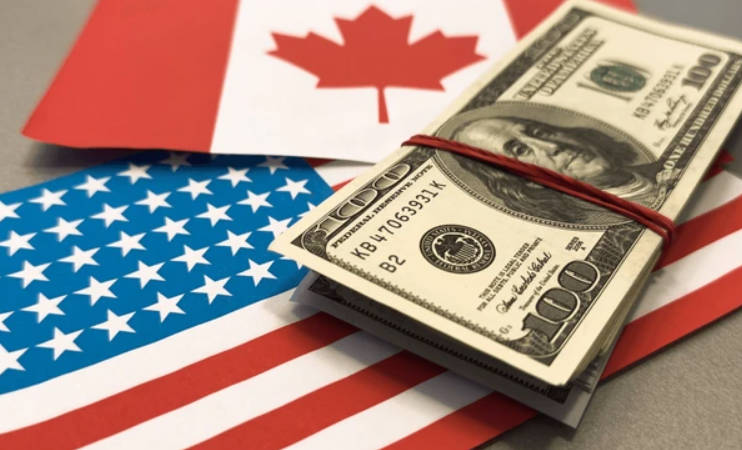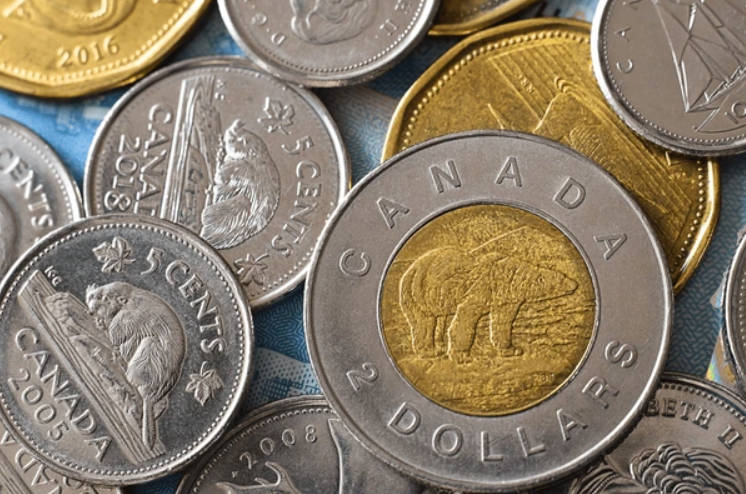Important Information
This website is managed by Ultima Markets’ international entities, and it’s important to emphasise that they are not subject to regulation by the FCA in the UK. Therefore, you must understand that you will not have the FCA’s protection when investing through this website – for example:
- You will not be guaranteed Negative Balance Protection
- You will not be protected by FCA’s leverage restrictions
- You will not have the right to settle disputes via the Financial Ombudsman Service (FOS)
- You will not be protected by Financial Services Compensation Scheme (FSCS)
- Any monies deposited will not be afforded the protection required under the FCA Client Assets Sourcebook. The level of protection for your funds will be determined by the regulations of the relevant local regulator.
Note: Ultima Markets is currently developing a dedicated website for UK clients and expects to onboard UK clients under FCA regulations in 2026.
If you would like to proceed and visit this website, you acknowledge and confirm the following:
- 1.The website is owned by Ultima Markets’ international entities and not by Ultima Markets UK Ltd, which is regulated by the FCA.
- 2.Ultima Markets Limited, or any of the Ultima Markets international entities, are neither based in the UK nor licensed by the FCA.
- 3.You are accessing the website at your own initiative and have not been solicited by Ultima Markets Limited in any way.
- 4.Investing through this website does not grant you the protections provided by the FCA.
- 5.Should you choose to invest through this website or with any of the international Ultima Markets entities, you will be subject to the rules and regulations of the relevant international regulatory authorities, not the FCA.
Ultima Markets wants to make it clear that we are duly licensed and authorised to offer the services and financial derivative products listed on our website. Individuals accessing this website and registering a trading account do so entirely of their own volition and without prior solicitation.
By confirming your decision to proceed with entering the website, you hereby affirm that this decision was solely initiated by you, and no solicitation has been made by any Ultima Markets entity.
I confirm my intention to proceed and enter this website Please direct me to the website operated by Ultima Markets , regulated by the FCA in the United KingdomWhy Is the Canadian Dollar So Low?
The Canadian dollar, better known as the loonie, has slipped to its weakest level since the pandemic, now hovering near US $0.72. Some analysts even warn it could fall toward US $0.69 in the coming months.
For Canadians, this weakness isn’t just a line on a trading chart. It affects the cost of groceries, travel, and the competitiveness of local businesses.
So, why is the Canadian dollar so low? The answer lies in a mix of structural realities and short-term pressures shaping Canada’s economy.
Structural Reasons Behind the Fall of the Canadian Dollar
Why the Canadian Dollar Is Worth Less Than the U.S. Dollar

Currencies reflect supply and demand. Global investors seeking U.S. assets need U.S. dollars, which strengthens the greenback and makes the Canadian dollar comparatively weaker.
The U.S. dollar dominates because it is the world’s reserve currency, making up about 60% of global reserves. It is used to price oil, debt, and much of international trade. Canada’s dollar, while stable, doesn’t have the same global reach.
Size matters as well. With a GDP of US $25 trillion compared to Canada’s US $2 trillion, the U.S. naturally attracts more trade and investment. In times of crisis, investors also flock to the U.S. dollar as a safe haven, while the loonie does not enjoy the same status.
Interest rates are another factor. Higher U.S. interest rates pull in capital, while cuts by the Bank of Canada make the Canadian dollar less attractive.
Finally, Canada’s reliance on commodities such as oil and lumber leaves its currency vulnerable to swings in global prices, whereas the U.S. economy is more diversified. This explains why is the Canadian dollar so low relative to the U.S. dollar during times of uncertainty.
Why Is the Canadian Dollar So Low Against Other Currencies?
The Canadian dollar isn’t only weak compared to the U.S. dollar. Against the euro, yen, and pound, the loonie shows similar vulnerability because of its heavy reliance on oil prices and interest rate expectations. Interestingly enough, a 2025 study found that the loonie, euro, and yen have similar levels of volatility in global markets.
When oil prices fall or the Bank of Canada signals rate cuts, the Canadian dollar tends to decline more sharply than currencies from larger, more diversified economies. This volatility is one reason why the Canadian dollar is so low compared to other global currencies in 2025.
Short-Term Pressures Driving the Loonie Lower
Recent developments in 2025 have worsened the loonie’s position. Canada’s economy shed more than 65,000 jobs in August, pushing unemployment up to 7.1%, its highest in nearly a decade outside the pandemic. GDP growth has slowed to just 1%, compared to nearly 3% in the United States. High household debt at about 180% of disposable income also makes Canada more fragile when conditions tighten.
These weak numbers have increased expectations that the Bank of Canada will cut rates again at its September meeting. By contrast, the U.S. Federal Reserve has maintained higher rates, keeping the U.S. dollar strong. This rate gap is a major reason the Canadian dollar is so low right now.
Oil prices have not offered support either. With crude dipping below US $62 per barrel, Canada’s export revenues have weakened, dragging the loonie down with them.
Trade tensions add further uncertainty. Proposed U.S. tariffs of up to 25% on Canadian goods could cut exports by as much as 5%, according to economists, undermining one of Canada’s key growth engines.
Everyday Impacts of a Low Canadian Dollar
A weaker loonie has very real effects for Canadians. Traveling to the U.S. is now more expensive. A C$200 hotel budget now only converts to about US $142. Imported goods such as iPhones, books, and fresh produce costs more in Canadian dollars, contributing to inflation.

Small businesses are particularly exposed. Without the hedging tools of larger companies, they often have to absorb higher costs or pass them on to customers. Even professional sports teams feel the squeeze, since they pay salaries in U.S. dollars while earning revenue in Canadian dollars.
Are There Benefits to a Weak Canadian Dollar?
There are some upsides. Canadian exports become cheaper for foreign buyers, boosting industries such as manufacturing, forestry, and energy. Tourism also benefits, as U.S. visitors get more value for their money in Canada. Lower production costs can attract international film crews as well, supporting local economies.
However, these benefits can be blunted if tariffs reduce Canada’s access to U.S. markets, its largest trading partner, showing that the drawbacks outweigh the gains when considering why is the Canadian dollar so low for the overall economy.
Future Outlook for the Canadian Dollar
The future of the loonie will depend on how key forces play out: oil prices, interest rate decisions, and trade policies. A recovery in global commodity demand or a narrowing of the interest rate gap with the U.S. could stabilise the currency. But if oil stays weak and the Bank of Canada cuts rates further, the Canadian dollar may remain under pressure through the end of the year.

The Bottom Line
The loonie is weak because of both structural and cyclical factors. Structurally, the U.S. dollar is stronger, more trusted, and tied to the world’s largest economy. Cyclically, Canada’s soft economic data, high debt, lower oil prices, looming rate cuts, and trade risks have pushed the loonie further down.
For Canadians, that means higher import costs, pricier U.S. trips, and tougher conditions for small businesses. Until Canada’s economy strengthens and the policy gap with the U.S. narrows, the Canadian dollar is likely to stay low.
FAQ: Why Is the Canadian Dollar So Low?
Will the Canadian dollar recover in 2025?
The outlook depends on oil prices, trade conditions, and interest rates. If global demand picks up and the Bank of Canada avoids deep cuts, the loonie could stabilise. But if current trends continue, analysts expect the Canadian dollar to remain weak for the rest of the year.
Is a weak Canadian dollar good or bad for the economy?
It’s a double-edged sword. A weak loonie boosts exports and tourism but raises costs for imports, which can fuel inflation and hurt consumers.
Why is the Canadian dollar worth less than the U.S. dollar?
The U.S. dollar is the world’s reserve currency, backed by a much larger economy and higher investor trust. In times of global uncertainty, money flows into U.S. assets, strengthening the greenback relative to the loonie.
How do oil prices affect the Canadian dollar?
Canada is a major oil exporter, so its currency often moves with crude prices. When oil prices fall, Canada earns less from exports, reducing demand for the loonie.
What can Canadians do to cope with a weak dollar?
Consumers may need to adjust budgets for U.S. travel or imported goods. Businesses can explore hedging strategies or diversify supply chains to reduce exposure to currency swings.
Disclaimer: This content is provided for informational purposes only and does not constitute, and should not be construed as, financial, investment, or other professional advice. No statement or opinion contained here in should be considered a recommendation by Ultima Markets or the author regarding any specific investment product, strategy, or transaction. Readers are advised not to rely solely on this material when making investment decisions and should seek independent advice where appropriate.












